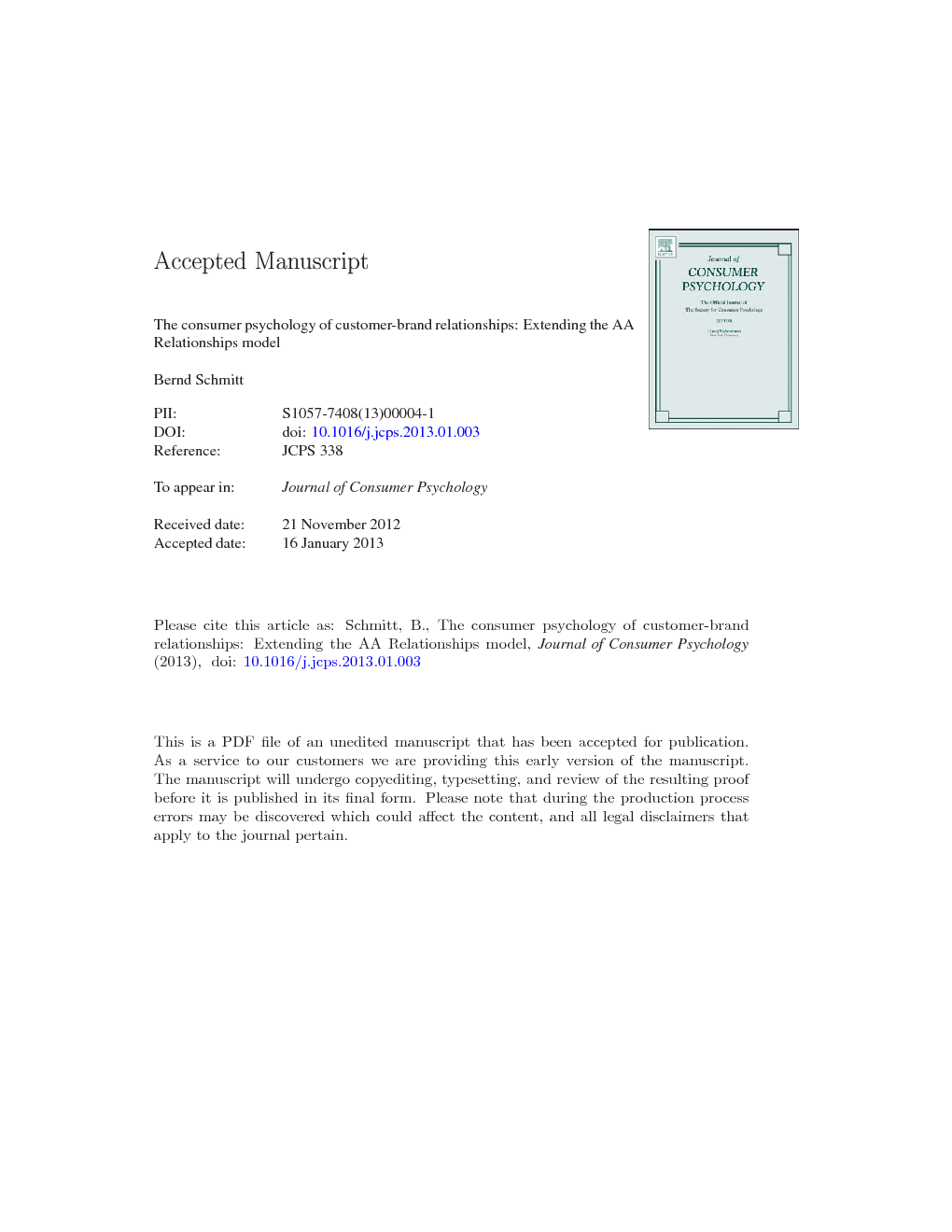ترجمه فارسی عنوان مقاله
روانشناسی مصرف کننده از روابط نام تجاری - مشتری : توسعه مدل رابطه ای AA
عنوان انگلیسی
The consumer psychology of customer-brand relationships: Extending the AA Relationships model
| کد مقاله | سال انتشار | تعداد صفحات مقاله انگلیسی |
|---|---|---|
| 2040 | 2013 | 13 صفحه PDF |
منبع

Publisher : Elsevier - Science Direct (الزویر - ساینس دایرکت)
Journal : Journal of Consumer Psychology, Available online 17 January 2013
ترجمه کلمات کلیدی
روانشناسی مصرف کننده - درک نام تجاری
کلمات کلیدی انگلیسی

